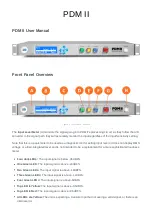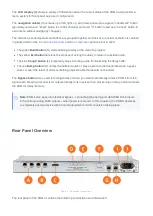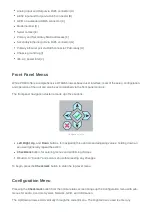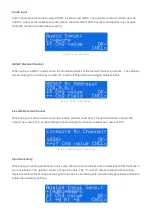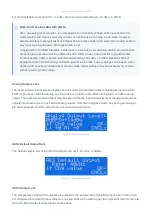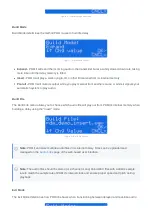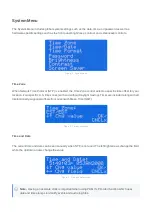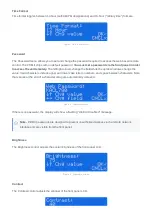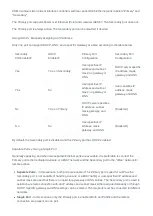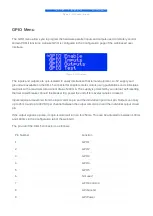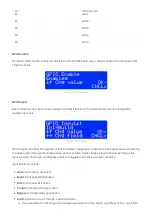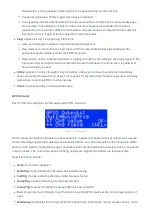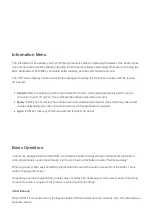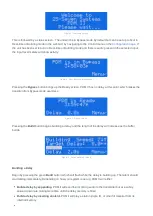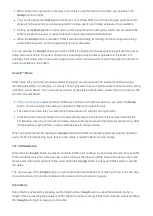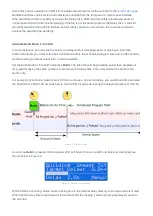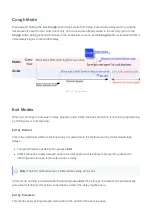
PDM II contains two network interface controllers with rear-panel RJ45 Ethernet ports labeled "Primary" and
"Secondary".
The Primary port supports Power over Ethernet (PoE) and L/AES67. The Secondary port does not.
The Primary port is always active. The Secondary port can be disabled if desired.
Using DHCP v. Manually Assigning an IP Address
Only one port can support DHCP, DNS, and a specific Gateway at a time according to the table below:
Secondary
Port Enabled?
DHCP
Enabled?
Primary Port
Configuration
Secondary Port
Configuration
Yes
Yes, on Secondary
User specifies IP
address and subnet
mask; no gateway or
DNS
DHCP server specifie
IP address, mask,
gateway, and DNS
Yes
No
User specifies IP
address and subnet
mask; no gateway or
DNS
User specifies IP
address, mask,
gateway, and DNS
No
Yes, on Primary
DHCP server specifies
IP address, subnet
mask, gateway, and
DNS
(Disabled)
No
No
User specifies IP
address, mask,
gateway, and DNS
(Disabled)
By default, the Secondary port is disabled and the Primary port has DHCP enabled.
Separate Ports v. Using a Single Port
Generally speaking, and when two separate Ethernet ports are available, it is preferable to connect the
Primary port to the dedicated Livewire or AES67 network and the Secondary port to the "office" network for
remote access.
Separate Ports - In this scenario, both ports are enabled. The Primary port is used for AoIP (as the
Secondary port is not capable of handling Livewire or AES67 traffic). A user-specified IP address and
subnet mask are used, but there is no need for a gateway or DNS entries. The Secondary port is used to
establish a remote connection with an IP address and subnet mask either assigned manually or through
DHCP. Specific gateway and DNS settings can be entered. The two ports must be connected to different
networks.
Single Port - In this scenario, only the Primary port is enabled. Both AoIP traffic and the remote
connection are present on one port.

